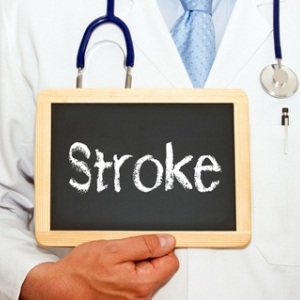
Clot-grabbing devices are more effective at treating stroke patients, according to a study of 500 patients done in the Netherlands.
Read: What is a stroke?
"Catching the clot and fishing it out of the blocked artery to reopen it makes a big difference in outcome," Dr. Jeffrey Saver, a director of the University of California Los Angeles Stroke Centre, told Reuters Health.
Devices have been around for a while
The devices to retrieve clots have been around for a while but until now "we hadn't had a clinical trial showing that they made patients better."
Ninety days after their strokes, 32.6 percent of patients whose treatment included going into a brain artery to remove a clot achieved functional independence, compared to 19.1 percent given only usual care with clot-dissolving drugs.
The study, known as MR CLEAN and published online by the New England Journal of Medicine, applies to patients whose strokes were the result of a blockage in the large forward arteries of the brain.
But that's the most common type of stroke, and the findings could affect up to 125 000 patients in the U.S. and 90 000 in Europe each year.
"We're talking about the sickest stroke patients, the ones with blockages of their main arteries leading to the brain, and these patients account for the majority of disability and death related to stroke," study co-author Dr. Albert J. Yoo, director of Acute Stroke Intervention at Massachusetts General Hospital in Boston, told Reuters Health by phone.
Read: Treating a stroke
Dr. Saver, who was not involved in the study, said the findings should give people an even stronger reason to get someone to the hospital as quickly as possible if they demonstrate stroke symptoms, such as facial drooping, arm weakness or speech difficulties.
"Stroke is now an even more treatable disease today than it was yesterday," he said, citing the availability in some centres of the clot-extracting devices that can be used in combination with clot-dissolving drugs. "But we can only use them if patients get to the hospital in time."
All the patients in the new study who were treated with the devices received their surgery within six hours of the onset of symptoms. Nine out of ten were initially treated with injections of tPA, a clot-dissolving drug, before the researchers determined who would be in the group that also received the clot-extraction procedure.
Typically, the clot-busting drug only opens the blocked artery in about a third of cases.
"Until now, people were lucky to get intravenous tPA. But the majority of those patients still have poor outcomes," said Dr. Yoo. "The field was looking for a better option and MR CLEAN showed that we do have a better option."
No difference in death rate
"There was no difference in the death rate, but every other category demonstrated improvement," he said.
The only significant difference in side effects was that 5.6 percent of the patients whose clots were extracted had signs of a subsequent stroke within 90 days. The rate was 0.4 percent in the group that received standard care.
Past comparisons of tPA and clot-removing devices had given less-promising results, said Dr. Sidney Starkman, the other co-director of the UCLA stroke centre, who was involved in two of those earlier studies. That quelled interest in clot-removing devices.
But the technology has improved dramatically, the new study reflects those improvements and the latest data should renew interest in those devices, he said in an interview.
"There has been hesitancy to use these" devices, Saver said, because "the earlier generation of these devices were not nearly as effective in opening the blocked arteries and they had not shown a benefit above medical therapy."
Read: Symptoms of a stroke
With the new results, "I think there's going to be a push to get more centres offering this treatment," Yoo said. "We needed the evidence, and now that we have the evidence, this is going to provide the impetus to have more centres capable of doing this."
Read More:
Stroke survivors at high risk for five years
The seven steps to recovering from a stroke
Regenerative medicine: replacing brain cells lost from stroke
Image: Stroke from Shutterstock.




 Publications
Publications
 Partners
Partners















